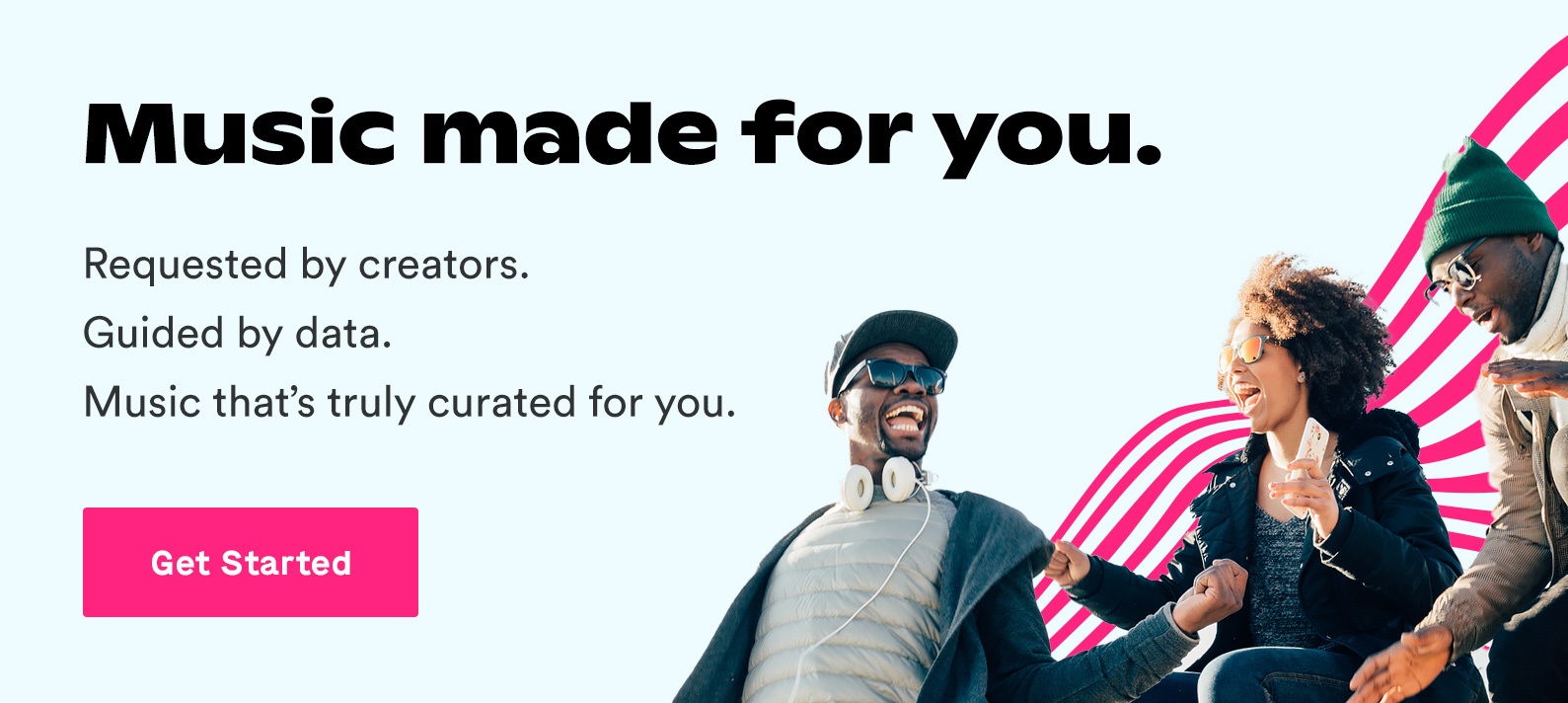Michelle Phan and all the bros of Dude Perfect need to respectfully step aside, because you are about to take YouTube by storm. You have great video ideas, so much charm you could bottle and sell it, and motivation to last for days.
There’s just one problem.
You’ve received a copyright alert from YouTube that says something about YouTube’s Content ID system and copyright infringement related to the music in your videos.
What does it mean? What is Content ID, and why does YouTube even care where the music in your videos comes from?
It turns out that YouTube cares very much about where you get your music, and — more importantly — whether you have permission to use that music.
In fact, the video giant has spent over $100 million creating its Content ID system to methodically hunt down and identify copyright infringement on every corner of its site.
Whether you are as big as Dude Perfect, or your only YouTube channel subscriber is your mom, you still need to understand and care about how YouTube’s Content ID system works. After all, it can protect all your brilliant new videos as well!
What Is Copyright Infringement?
Before we break down how YouTube’s Content ID system works, it helps to understand a little bit about why the system exists in the first place. Content ID was designed to search for and identify instances of copyright infringement in videos uploaded to YouTube.
When someone creates a song, a poem, a book, or a video, they own that piece of art and have the exclusive right to sell and profit from it. For example, if you write a beautiful ballad all about your courageous battle against toe fungus, no one can legally sell and profit from that song or put it in their videos without your permission.
You may imagine that with roughly 300 hours of video uploaded to YouTube every minute there’s just noway the platform can police all of its content. You are such a small fish in such a massive ocean of adorable cat videos that it can’t possibly matter that you threw in Ariana Grande’s latest hit into your video.
Not true! That’s because YouTube really, really, reeeeally doesn’t want you infringing on copyright. To stop this from happening, the company has built a powerful, all-knowing copyright guardian called Content ID.
What Is YouTube’s Content ID System?
YouTube’s Content ID doesn’t wear a cape, spandex, and underwear over its pants, but it is impressively heroic in its mission to root out all instances of copyright infringement among YouTube’s massive collection of videos.

Content ID is a repository of over 75 million reference files (and growing). Creators can upload a video or music file into Content ID’s database if they can prove that they have complete ownership of the material.Content ID will then create a fingerprint of the file.
Like any good CSI investigator, Content ID will then seamlessly compare its 75 million fingerprints across all current and newly uploaded YouTube videos. And these rules apply to any type of copyrighted material, whether that is a recent Top 100 hit or quiet background music behind a voiceover.
It doesn’t matter if you are YouTube famous or have posted your very first video. Content ID is an equal opportunity program. If it catches you, it will be up to the rights holder to decide your fate (and possibly your YouTube earnings!).
What Happens If Content ID Comes Knocking?
Even if you wisely decide not to add an Ariana Grande song to your next video, you may still find yourself dealing with YouTube’s Content ID system. It’s surprisingly easy to accidentally commit copyright infringement.
For example, if you record your video in the mall and Ariana’s hit single, “thank u, next” is playing over the speaker system, Content ID will probably catch it. Likewise, if you record a video in your house, and the television is showing an episode of Property Brothers in the background, Content ID won’t care if it was unintentional.
When Content ID identifies copyrighted material in your video, the resulting action that YouTube takes will depend upon the preferences of the copyright holder. Each copyright holder can ask YouTube to perform one of three options when their content is identified in other videos:
- - Track: The content owner will receive a notice from YouTube about the offending video and will be able to track the video’s views.
- - Monetize:The content owner can ask YouTube to place ads on the offending video and collect all ad revenue. Unsurprisingly, this is the most popular Content ID setting, and YouTube claims that it has paid out over $2 billion to partners who have monetized their Content ID claims.
If you don’t care about your video making money for someone else (and zero dollars for you), then perhaps this isn’t a big deal. However, YouTube monetization is something most content creators dream of. If you plan on becoming a YouTube star and earning some dough off your videos, you certainly don’t want your dollars flowing into someone else’s piggybank!
- - Block: The content owner can choose to automatically block any video that includes their content. If your video is blocked, no one will be able to find it, and you won’t earn a penny on your content.
Can You Fight Back Against Content ID?
No superhero is infallible, and even YouTube’s Content ID system has been known to make a bad call every once in a while.
This may happen when you put music in your video that belongs to someone else but that you have received permission or paid a royalty to use. Content ID may accidentally tag this as copyright infringement.
When this happens, you can dispute the claim. Go to your YouTube video manager portal, click on the copyright notice message, and follow instructions to dispute your claim.Explain that you have permission to use the content or that the content was misidentified as belonging to someone else.
The copyright owner will receive your dispute notice and will have 30 days to respond by either releasing their claim or upholding their claim. If you have permission to use the content, then the copyright owner should release your claim. If they don’t, you can appeal their decision toYouTube.
Once your claim is released, you will begin receiving ad revenue for your video once again.
How Is YouTube’s Strike System Related to Content ID?
You may log into your YouTube account and discover that one of your videos has been unceremoniously taken down. Eager fans who try to watch the video will instead land on a page with that infamous sad YouTube logo. (The one with the unhappy face.)
You’ll find that you have a message indicating you have received a copyright “strike.” Receiving a strike means that you must completeYouTube’s “copyright school” before you can post additional videos. You also won’t be able to use YouTube’s live streaming capability for 90 days, a real bummer for professional gamers.
Confusingly, YouTube’s strike system is not directly connected to its Content ID system. Instead, they work simultaneously but independently from each other. A strike occurs when a content owner discovers a video that features copyrighted content and submits a takedown notice toYouTube. As long as they can prove that they own the material featured in your video, YouTube will take down your video.
YouTube’s three-strike system can lead to serious trouble.If you receive three strikes within 90 days, YouTube reserves the right to permanently take down your entire channel, including perfectly legal videos. In an instant, you could lose all your hard work and any revenue you earned fromYouTube. So much for your future of YouTube stardom!
The moral of the story is that it’s never a good idea to steal music for your YouTube videos no matter how small your channel is or how innocent your intentions. Playing by the rules in the beginning will allow you to slowly grow your viewership with each new brilliant video you post and increase your YouTube ad revenue earnings.
Can YouTube’s Content ID Protect My Videos?
Don’t dabble in copyright infringement, and you won’t have to worry about YouTube’s Content ID system. In fact, video content creators should appreciate Content ID. It doesn’t have to be a scary piece of code ready to pounce on your videos and steal away your precious ad revenue. Instead, it can help protect you from others who would take advantage of all your hard work and try to make money off your videos.

As long as you play by the rules and create a unique video, you can submit your files to YouTube’s Content ID system. Once your video is part of its database, it will work for you, scouring all past, present, and future YouTube videos to make sure no one steals your video. If it does find instances of other people using your videos, you can direct YouTube to place ads on their videos and rake in the extra money!
How Can You Find Royalty Free Music for Your Next Video?
While we all love Ariana Grande, you can’t use the pop princess’s music in your next YouTube video unless you can convince her record label to give you permission or you have pockets deep enough to pay a hefty royalty fee. Instead, most new YouTube video personalities will need to search fora less expensive source for royalty free music. One option is to use YouTube’s own library of royalty free music and sound effects.
This can be a good option if you are working on a barebones budget or are testing out a new YouTube channel and don’t want to devote too many resources or too much money in the beginning.
However, when it’s time to take your YouTube channel and the music for your videos to the next level, consider purchasing a membership to Soundstripe. We offer a wide range of excellent royalty free music for YouTube in lots of different genres.
Our music is fresh, and our library grows by leaps and bounds every month. While the other guys reuse the same music from YouTube’s free library, you can access new sounds from great new artists through Soundstripe with a subscription.
Stay on the right side of YouTube’s Content ID system with Soundstripe’s royalty free music for your videos. Check out our memberships today. And


